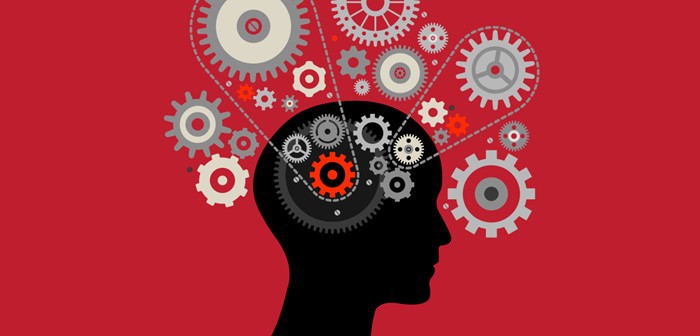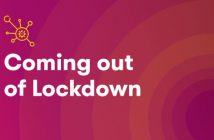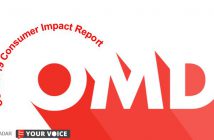Behavioural Economics came to prominence in the 1990’s and yet the concept is not yet widely understood, let alone widely adopted in practice. So why have we been so slow on the uptake? Perhaps it’s because Behavioural Economics sounds intimidating to some but its application is something that we should all start to think about and the concept it becoming more and more accessible, you don’t need to trawl through textbooks to grasp a basic understanding of it.
I got the chance to attend WARC’s Behavioural Economics in Advertising Conference a couple of weeks ago, which was a really exciting event, and not just because the first speaker opened by starting a Mexican wave. This was not only conducted to ensure that the audience was awake but to illustrate a key point in Behavioural Economics; our behaviour is heavily influenced by the context in which we make our decisions and much of our behaviour is the result of copying others.
“Humans are to thinking as cats are to swimming”
While cognitive psychology has revolutionised the way that we think about the decision-making process, it is very much a product to understand our way of thinking that only looks at part of the picture. Much of the existing work on Behavioural Economics focusses on neurological aspects of the brain and what goes on inside our heads. However, one should look beyond this, as the way we interact with our surroundings plays a fundamental role in our decision-making. “Humans are to thinking as cats are to swimming”. We, as human beings, outsource the cognitive load to other people as much as possible, copying the behaviour of others. We are hugely influenced by the context around us and use anchors to navigate this context and make decisions. The ground breaking work by Daniel Kahneman and co. has resulted in behaviours often being grouped into one of two areas (System 1 and System 2), and while these classifications have been fundamental in our evolving understanding of decision-making, they can be restrictive when not applied correctly.
Social Norms: Use with caution
While statistics are a great thing, and those in the advertising research industry love to throw out a good stat, they should perhaps come with a cautionary note. Statistics are often used to evidence social norms and can be used to encourage a change in behaviour; for example, offering a statistic such as “80% of people don’t make wills” to encourage people to make a will can have adverse effects. Evidencing that most people align with this behaviour creates a social norm, which makes you even less likely to change your behaviour, as social norms reaffirm it. Statistics are becoming increasingly useful with the expanding universe of data available to us, but it is what we do with this data that is key. With more and more behavioural data available, the opportunity to utilise Behavioural Economics is growing as it can shape the way that we use this data.
What are the implications for brands?
The combination of behavioural data and Behavioural Economics improves the opportunity for creating personalised communication that is relevant to our audience without falling into ‘uncanny valley’, the point at which this personalisation becomes creepy. Colin Strong, Global Head of Behavioural Science at Ipsos, identified a move towards ‘servitization’; this is centred around how companies can use the data that they have available to best serve their customers. While there is not a perfect formula for success in doing this, categories are fundamentally being reshaped by technology.
Ignoring the application of Behavioural Economics leaves you with a partial picture of the behaviour of your audience and leaves brands open to missing the mark with their communications. While it may seem obvious, brands should ask the question “what kind of behaviour is purchasing my product and what kind of behaviour do I want it to be?” Is it an informed or uninformed behaviour? Is it independent or are they copying others? It is then important to utilise the brand’s subconscious primes in order to bring themselves to the forefront of the consumer’s mind when they are acting this behaviour. To see an example of the concept of priming, you just need to watch a short extract from Focus (film).
What does this mean for the future of Advertising Research?
The scope of potential application for Behavioural Economics is wide-ranging but not all encompassing. It should not be used as the sole explanation for consumer behaviour, nor should it be ignored. Experts in the field seem to align with this fact, with Mark Earls stating that “If marketing is going to move forwards, it needs to take Behavioural Economics hand in hand with other sciences like Anthropology and Sociology”. Crawford Hollingworth believes that Behavioural Economics should be used in advertising like scaffolding on a building; you put it around the building, assess the building, then you have a stronger building once you take it down. This rings particularly true for Insight in the Media Industry; Behavioural Economics has the potential to test and strengthen our insights, not necessarily be the foundation upon which they are built.
The current status of Behavioural Economics and its wide-ranging opportunities for application is perhaps a reason for its absence in much of Advertising Research. In part, it is the responsibility of the Communications Industry to drive the application of Behavioural Economics in order to fully understand its capabilities. It is from this application that we can develop our understanding of Behavioural Economics in practice. If this area of work, that has been so thoroughly explored in academia, is to move into the spotlight in the industry, it is up to brands and agencies to be brave in their adoption and application of it.



